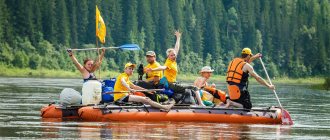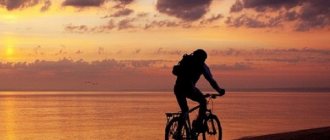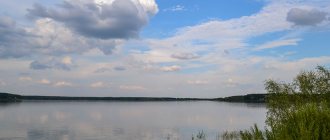Probably only in the Russian-speaking environment there is such a comprehensive word as “campaign”. It is in the vastness of the CIS that a three-day foray into a suburban forest, a week-long river rafting, a twenty-day trip through the mountains of Crimea, and even climbing the highest mountains of the country, region and continent can be called this. For a foreign tourist, such a unified name for all these types of recreation and sports leisure will cause at least surprise - after all, how can mountaineering and trekking be equalized, he will ask? And, of course, he will be right.
Now some Western trends have begun to come to us and our outdoor enthusiasts have increasingly begun to use borrowed names for certain types of sports travel and hiking. And for those who want to visit other countries, it will not be superfluous to find out what this or that name actually means.
However, before that, let’s look a little more in detail at what kind of hikes there are in general and what distinguishes them from each other.
TYPES OF HIKES BY MODE OF TRAVEL
Today, a wide variety allows lovers of all major types of active recreation to find their own route: skiing, cycling, water sports, and those who simply prefer walking. The following main types of hikes are distinguished according to the method of movement and terrain: hiking, skiing, mountain, water, cycling, sailing, motorcycle, car, as well as speleotourism (in caves).
- With walking travel, everything is more or less clear (although they are also divided into trekking, hiking, backpacking and others, which we will discuss later in this article). It is assumed that you put on a backpack and go for a walk with overnight stays in nature.
- Ski trips are essentially the same as hiking trips (along a given route, with predetermined places to spend the night, a meal plan, and so on), only on skis and on snow.
- Mountain hiking – mountain hiking refers to hiking that involves fairly high mountains with crossing passes, when the tourist carries all his belongings and equipment with him (one of the differences from mountaineering).
- Water trips – trips on kayaks and inflatable boats, rafting; By the way, along with hiking, water travel leads in popularity.
In principle, sailing trips can also be classified into this category; As you can see, only the means of transportation is different. There is an opinion that this type of travel - sailing - is singled out separately only because it is so undeveloped and rare in our country, which deserves special mention.
- Bicycle tourism – well, everything is clear here. The tourist travels the entire route by bicycle and carries all his belongings with him.
- Car and motorcycle tours - although such movements are considered tourism, today many will say that this type of travel does not apply to tourism and hiking, and we are inclined to agree with thisJ
- Speleotourism is hiking through caves, which can be vertical or horizontal. This type of hiking also has its own specifics. Firstly, this is one of the most extreme types of outdoor activities. Secondly, the entire journey takes place in extremely cramped space, sometimes in water, and requires a completely different set of skills from other types of trips, for example, the ability to use special equipment. equipment and technology (for example, self-rescuers) and preliminary development of movement tactics and a schedule for the proposed assault of the cave based on the nature of the caves and the presence of canopies, and so on. In general, caving tourism is very different from all other types.
According to the temperature regime, hikes can also be fairly roughly divided into “ summer ” and “ winter ”, that is, in warm weather conditions and in cold and winter conditions. The second category also includes hikes that involve climbing to high altitudes, where snow and cold are constant and unchanging weather conditions.
Of course, hiking in warm regions is easier to endure, our body is more adapted to such loads, and we will have to carry less things in a backpack, because we will not have to constantly worry about heat loss and the need for insulation. However, “winter” travel has its own appeal; Moreover, climbing many peaks without options requires just such a temperature regime.
AMATEUR AND SPORTS HIKES
In addition to dividing into all the types described above, all hikes can also be divided into amateur and sports.
An amateur hike most often means a short-term, no more than a week, event with little complexity, organized by a group of interested people. Typically, such a hike includes a short (1-2 days) trek with possible deviations from the route, 2-3 days of rest at a certain stopping place (known in our country as “days”) and the journey back. There is no difficulty category for such a hike, and absolutely anyone with normal health and even a lack of physical fitness can cope with such loads.
A sport trip is understood as a hike organized along a specially designed route and in accordance with certain rules (requirements for the route, safety, experience of participants, duration and seasonality of the route, and so on). A sports hike also involves setting certain goals (reaching the top, a certain speed of movement, and so on).
All sports hikes can be divided into 6 categories according to difficulty. The first category is considered the easiest, and the sixth, accordingly, the most difficult.
The most convenient method to use is to determine the category for the selected route by comparing it with the standard one for a given type of sports tourism. It should be noted that complexity is influenced not only by the presence of difficult sections of the route, but also by the duration of the route and the number of days spent on the road, the novelty of the route, autonomy, etc.
In sports tourism, there are a number of admissions to hikes that prevent unprepared participants from entering the route. Such admissions include passing certain standards for physical training (for example, running a certain distance, pull-ups, squats), qualifying participation in sports events before the trip (field training trips, sports camps, training events and competitions), having a proven successful completion routes of less complexity (for hikes of a high category of difficulty), training in techniques and skills in working with special equipment, and so on. Such approvals are carried out by special organizations - tourist clubs and associations.
In general, we can say that in amateur hiking, the desire to see the area, admire the beauty of nature, relax and change the scenery comes first; This is a kind of leisure and recreation. In the case of sports trips, like any other sport, this involves setting sports goals and standards and their implementation within a certain time frame and under certain conditions.
And if everything is clear with the definition of amateur hiking and sports hiking, then difficulties arise with the separation of the concepts of trekking, hiking and backpacking. You can immediately reassure newcomers to this topic - very often different types of outdoor activities are closely related to each other, and within one trip you can do several at once, so sometimes it is difficult to choose one correct name for a specific route. But there are main differences between them and it would be nice to know them. This will help you choose exactly the type of holiday that suits you best.
Types of hikes
North-West (Lenoblast and Karelia) 1 day
Walk around Mon Repos Park on kayaks (kayaks)
Our kayaking trip is an excellent one-day water trip around the island of Tverdysh. The island is famous for Mon Repos Park with its beautiful northern nature, ancient buildings and rich history. We will see a lot of rocks, pine trees, exquisite architecture and the spaciousness of the Vyborg Bay. Our hike is as accessible as possible and is located two hours from St. Petersburg by car or train. Meet us at the station in Vyborg! Meeting of the group at Vyborg station at 9:10 (train from Finlyandsky station at 06:47, Lastochka at 07:55). Then transfer the group to the base at the address: Vyborg, Dacha Okhotnikov Street, 3A. We finish the route at the starting point, transfer the group to the station. We take the train to St. Petersburg at 19:38. (Read more at the bottom of the page in the “How to get there” block (scroll down all the dates of the trip). Let’s go in a relaxed mode, this walk is suitable for people with any hiking experience, as well as for children over 10 years old. And this is a great opportunity to get acquainted with the format of kayak trips . We will go on high-speed plastic double kayaks. They are comfortable and stable. The main difference from kayaks is the high speed of movement. We will walk 13 kilometers along the Vyborg Bay. The route is circular, so new places are always waiting for us. We will go ashore to take beautiful pictures and take a walk to interesting places. We will see Vyborg Castle very close, from the water; we will land on the Island of Love, find out what legends are shrouded in the tomb on the Island of the Dead; we will find mysterious military fortifications in the forest, built at the beginning of the last century. And that’s not all. Measured splashing oars, clean forest air, silence and the unique landscape of the park - the background of our little trip. Isn't it a great day? We also have one-day walks around the Ladoga skerries! All our trips are by sea kayak.
- Complexity:
- Deadlines: and 25 more deadlines
- Seats: 2 seats left no seats left 4 6/15 spaces available 5/15 spaces available 3 spaces available 3/15 spaces available available spaces available 9/15 spaces available available spaces available available spaces available available spaces available available spaces available there are places there are places there are places there are places
- Cost: from
3,150 ₽Price:
from
3,150 ₽Price:
from
3,150 ₽Price:
from
3,150 ₽Price:
from
3,150
₽Price:
from
3,150 ₽Price:
from
3,150 ₽Price:
from
3,150 ₽Price:
from
3,150 ₽Price:
from
3,150 ₽Price:
from
3,150 ₽Price: from 3,150 ₽Price:
from
3,150
₽Price
:
from
3,150 ₽Price:
from
3,150 ₽Price:
from 3 150 ₽Price: from
3,150 ₽Price:
from
3,150 ₽Price:
from
3,150 ₽Price
from
from
3,150 ₽Price:
from
3,150 ₽Price:
from
3,150 ₽Price:
from
3,150 ₽ Cost:
from
3,150 ₽
I want to go on a trip
Trekking
trekking, which is new to us, usually means a long journey on foot through mountainous terrain; Usually such an event does not require special preparation. Most often, participants travel with small backpacks strictly along a specially designed route, spending the night in campsites, tourist centers or lodges. In places of overnight stay, tent rest is usually assumed, but specially equipped houses or guesthouses can also be arranged. This type of vacation is ideal for beginners due to the fact that tourists carry only a small supply of food with them; Also, for trekking, a tourist will not need special training and skills, just a desire to complete the route is enough. Sometimes tourists can even travel without tents or other heavy equipment. In turn, the absence of excess weight makes mountain hiking much more comfortable and easier.
The trekking route can go through a variety of terrain: it can be a forest, a steppe, simple mountain passes, or in general any rough terrain.
In recent years, most tourists go on hikes of this type for the reason that it gives the opportunity to see the beauty of nature without making significant physical effort. Of course, some stamina will still be required: for example, it is generally accepted that if in ordinary life you can climb to the 9th floor by walking up the stairs, then you can go trekking without any worries.
Hiking
Hiking is usually understood as the most lightweight trek . It lasts only a few days, usually the hiking route is designed for a weekend (often weekend routes can be included in this category). With this type of recreation, the participant follows a strictly prepared route and carries with him no more than a daily supply of food and water. Often the route is calculated in such a way that by the end of the journey the group ends up at the starting point, which makes it possible to complete such a hike most conveniently, especially if it is designed for a weekend.
Today, hiking is very popular all over the world, because age is not a hindrance, complex and expensive equipment is not needed, and the travel itself does not require much time. This type of hike is shorter than trekking and it always goes only along marked paths; there is no room for amateur activities. Perhaps it is for this reason that hiking has become so popular in Western Europe and the USA, where people like to follow all the rules and regulations.
Just kiddingJ Seriously, in many Western countries, forest and mountainous areas are closed to hiking for unprepared people, so amateurs are encouraged to walk exclusively along marked trails in permitted places, and they can also spend the night only in houses or campsites.
Since there is very little infrastructure of this kind in the CIS, according to this classification, more tourists tried trekking than hiking.
Backpacking
But if we talk about the term backpacking , then this concept is closest to our idea of how a hike should go. This type of travel does not include stops at campsites, which is why participants take all the necessary equipment with them. In addition, despite the presence of a certain direction of the path, the movement itself can be carried out not only along previously known paths, but also along a free trajectory from the route. That is, this is a kind of free journey with maximum separation from civilization.
However, it is worth remembering that when speaking about backpacking, a foreigner means any trip with a backpack, and not just a hiking trip. That is, this can also include trips in which there is a place for travel by hitchhiking, by bus, by rail, and so on.
In general, backpacking, as residents of Western countries see this concept, is any trip with a backpack on your back, which involves refusing to use package tours and vouchers, the possibility of changing the route and getting closer to nature; A backpacker is most often called abroad any tourist with a backpack (from the English backpack - backpack).
MOUNTAINEERING
In short, mountaineering (English mountaineering, alpine and climbing, which means “alpine ascent”) is a sport and leisure activity whose goal is to climb to the tops of mountains and rocky formations. It is believed that mountaineering as a sport originated in the 18th century, when people began to climb mountains for the purpose of entertainment and pleasure, and not out of practical necessity.
The paradox is that many, when going on a hike for the first time, think that hiking and climbing to the peaks that they have seen so much in movies are the same thing. But in reality this is absolutely not the case!
Above we have already discussed what trekking, hiking and backpacking are. Now let's deal with mountaineering and rock climbing.
Previously, these two currently independent sports and sports activities were part of one whole. However, rock climbing is now a separate discipline that involves climbing on a route or path, in which participants try to develop technical skills and train their body by climbing these routes and using a belay for complete safety. Today there are such varieties as bouldering (short sports routes with a maximum length of 5-6 meters), bench climbing, as well as climbing routes on natural terrain - on rocks.
Mountaineering can include elements of both rock and ice climbing, and other special skills. To put it simply, the most important thing in mountaineering is to get to the top (climb), and for this the climber must use all the methods available to him.
Another important difference is that in mountaineering a person takes full responsibility for his actions, while rock climbing for many remains only a form of fitness, that is, physical activity to keep fit.
In mountaineering there are also mountaineering ascents; These are exactly the climbs to the peaks about which many Hollywood films and dramas are shot, and which many tourists who wear backpacks for the first time dream of.
Extreme tourism
Extreme tourism is a type of travel that combines dangerous sports and active recreation. Chosen by people who lack thrills or want to challenge their fears.
| Subcategory of extreme tourism | Examples |
| Water | Surfing, river rafting, scuba diving |
| Ground | Sledding, horse riding, bicycle racing, digging (cave exploration) |
| Mountain | Mountaineering, climbing, skiing, snowboarding |
| Air | Bungee jumping, parachute jumping, aerial acrobatics |
| Urban | Parkour, roller skating, biking or skateboarding |
| Adventure | Jungle walks, safaris, hunting, wreck dives, swimming with sharks |
| Military | Sports shooting, tank control, use of combat aircraft at training grounds |
| Exotic | Living in wild tribes, exploring remote places of the planet, like the North or South Poles |
Among all types of tourism, extreme tourism has the most expensive, but also the most impressive characteristics. It is impossible to experience the same sensations from any other journey. Corporate tours are also practiced in large companies. They allow you to unite the team and make it a group of like-minded people.
Article design: Oleg Lozinsky
CLIMBING
As for mountaineering , they are usually classified as extreme sports. But, even despite the fact that there are practically no peaks left in the world that have not been conquered by man, every year more and more active recreation enthusiasts are becoming interested in climbing. Those who want to test themselves compete in the difficulty of the climb, the criteria of which are: the height of the peak, the technical complexity of the route, its duration and the nature of the obstacles encountered along the way.
Interestingly , rock climbing and mountaineering are not considered types of “tourism”. This is stated in the relevant sports regulations that control athletes and amateurs in this industry. Of course, many do not agree with this classification, but according to the standards it is considered that way.
Unusual types of tourism in the world
There are non-traditional types of tourism that are not widespread, but have an army of fans and are of certain interest to connoisseurs.
What are we talking about?
Tourism can be very educational, and sometimes mysterious.
The list of such tourism destinations is constantly expanding:
- Urban tourism is an unusual type of tourism in which travelers make “stalks”, inspect old destroyed factories, metro subways, catacombs and other man-made and gloomy structures;
- Digging is another type of tourism, which consists of forays into caves and miraculous structures underground;
- Virtual tourism as a new type of tourism - sightseeing using a computer, 3D tours, panoramas. Such a trip, of course, will not allow you to get real emotions. But overall it is interesting, and most importantly – completely free;
- Military tourism - a traveler goes to a place where active military operations are taking place. What could be better than being under a hail of bullets, grenades and bombs? Despite the fact that such trips are similar to suicide, they are still in demand among extreme sports and adventure lovers. Tourists often lose their lives during such a vacation;
- Travel for people with disabilities. In essence, they are no different from traditional travel, but the route and hotel are chosen taking into account the characteristics of the person. To make it easy and convenient for him to move;
- Illegal types of tourism - our compatriots are attracted to travel associated with risk. Get into Chernobyl, into the territory of a military unit, a guarded facility... The main thing is not what you see there, but the drive due to the fact that you can be caught at any moment.
These new directions have extensive development prospects. The beaches, sea and attractions are already quite boring, I want something unusual, interesting and rich. So why not climb an abandoned metro line, the tallest building in Moscow, or go to the Dyatlov Pass?
MOUNTAIN TOURISM
Mountain tourism is also a rather interesting category . Essentially, it's all the same as hiking; the only difference is the difficulty of the obstacles you have to overcome along the way. This also takes into account the altitude of the area in which you are located. For example: if you are going on a hike in the Caucasus, then in most cases it will be mountain tourism, but if you are going on a hike in the mountains of the Krasnoyarsk Territory, then it will already be hiking - just the altitudinal profile of the mountains in this area is not high enough to be classified as mountain tourism
Ensuring safety during hiking trips
It is important that the hike is not only interesting and eventful, but also safe. To do this, several factors must be taken into account:
- Always trust the organization only to professionals. Then you can be sure that there will be no problems in the future; specialists will take care of the preparation.
- Don't go hiking alone, especially if you don't know the area. Hikers are encouraged to gather in small groups to work as a team and provide each other with the necessary assistance while completing the route. There must be one person who knows the way well.
- You shouldn’t rely only on navigators and smartphones. Communication in some areas is unstable, electronic maps may not load. So be sure to take a paper map with you as a backup.
- A backpacking first aid kit should include the simplest medications that may be needed away from the base. Its presence is a guarantee of the safety of participants.
- You should not deviate from the route, especially in mountainous areas, without the permission of the group leader. All decisions to adjust the path are made by the person responsible for the trip.











